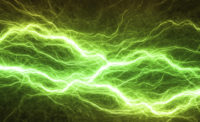The price that is paid for arc flash/blast accidents

Electricity can cause two types of burns: electrical burns from direct contact with current and thermal burns from arc flashes and blasts. An arc flash occurs when powerful, high-amperage currents travel, or arc, through the air. This can occur when high voltage differences exist across a gap between conductors. The result is an instant release of tremendous amounts of energy. Temperatures as high as 36,000 degrees F have been recorded in arc flashes.
The intense heat and light emitted by an arc flash can cause severe burns, destroying skin and tissue. An arc flash can ignite or melt clothing, resulting in further burns. Victims sometimes require skin grafts or amputations. Death is more likely with increased severity of burns, the percent of body area affected and age.
A high-amperage arc can produce a pressure wave blast with a force of up to 1000 pounds. The victim can be thrown by the force of this pressure. Injuries can occur from falling or colliding with nearby objects. Hearing loss may also result from the blast.
The intense heat may melt metal electrical components and blast molten droplets considerable distances. These droplets harden rapidly and can lodge in a person's skin, ignite clothing and may cause lung damage.
The consequences of arc flash burns are severe physically. Victims may suffer from chronic pain and scarring. Workers may also have difficulty re-integrating into the community, and may experience anxiety, depression, or other psychological symptoms. The social and economic costs may also be high. Workers' compensation pays only a portion of lost wages. Some workers may not be able to return to their pre-injury job. Employers bear the costs associated with lost productivity, reduced competitiveness, employee rehiring and retraining, as well being subject to increases in workers' compensation premiums.
Source: Washington State Department of Labor and Industries
Looking for a reprint of this article?
From high-res PDFs to custom plaques, order your copy today!






